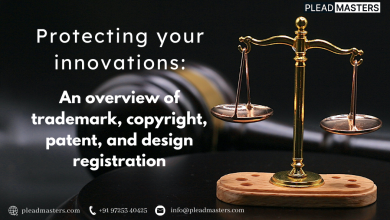When guardians of intellectual property become violators – who safeguards the rights of the guardians?

Today, in the global era, every company desires to safeguard their brand with the help of intellectual property laws. The companies downright depend on IP law firms for the protection of not only their brand name but also their logo, marketing tools, slogans, taglines, images, and, in some cases, their phone numbers.
But have we ever thought, Who protects the IP rights of these law firms when they themselves are charged with infringing the intellectual property rights of other law firms? Should the general public rely on these violators for the protection of their intellectual property rights? Let’s understand the above scenario with the help of cases filed by India’s leading law firms against one another.
“Higher Standards of Probity expected from intellectual property Lawyers” – The case of Sujata Chaudhri Vs. Swarupa Ghosh, 2022
Recently, in 2022, the case of Sujata Chaudhri vs. Swarup Ghosh set a perfect example of a legal battle between law firms to protect infringements of their own intellectual properties. The High Court of Delhi passed judgment in favor of the plaintiff (Sujata Chaudhuri, an intellectual property lawyer based in Delhi), stating that the defendant (Swarupa Ghosh, another IP lawyer) has infringed the trademark and copyright of the plaintiff’s logo since the logo of the defendant has been found to be deceptively similar to that of the plaintiff.
In the case, the plaintiff in question appeared before the court on the ground that she is an intellectual property lawyer and has adopted a distinctive “SC Device Mark” and registered the same in class 45 of trademark registration along with the words “SUJATA CHAUDHRI IP ATTORNEYS,” which can either be used alone or used in conjunction with these words. The said registration in class 45 applies to all legal services, including intellectual property consultancy, litigation, legal research, licensing, and advisory and consultancy services related to law, including intellectual property law. The plaintiff first designed the logo in 2014 and, hence, claims copyright ownership over it.
However, the plaintiff later found that the defendant is using a similar logo, ‘SG’, along with “SWARUPA GHOSH LAW CHAMBER,” for its law firm, and similar kinds of services are being provided by them. It was argued by the defendant that they have not copied the plaintiff’s logo and are just using a commonly available font named ‘Edwardian Script ITC’ and that the plaintiff cannot claim monopoly over something that is available to the public at large.
After hearing both parties, the court observed that the names Sujata Chaudhri and Swarupa Ghosh don’t sound similar, but their logos have an identical appearance, and it is clearly difficult to decipher a difference between the two. The main controversy here lies in the confusion over the deceptive similarity between the two marks because of the artistic way in which they are written, and hence, the court’s prima facie decision was to restrain the defendants from using their mark. (Post)
However, the most important observation in this case was about the higher standard of integrity that is expected from legal professionals, “especially the IPR lawyers, since a strong duty is cast upon them to take care of the intellectual property rights of others, to ensure that they do not indulge in infringement of IPR, that they do not indulge in using the intellectual property of another for similar services.
IP lawyers are responsible for protecting the intellectual property rights of their clients from being infringed. They are the guardians, but what will be the consequences when guardians become infringers? Who will guard the guardians in such cases remains the question, along with what is the legal basis for a higher standard of probity for a certain section of society based on their profession?
The case of Singh & Singh or Singh + Singh
Similarly, in 2014, in the matter of Pratibha M. Singh v. Singh and Associates, the Delhi High Court, after using psycholinguistic studies, concluded that Singh & Singh could be easily confused with Singh and Associates as the two names can be mixed as one through autocorrect or through Google since the name Singh is very predominant in India, and hence the court asked the defendants to include “Founder Manoj K. Singh” below their logo to avoid confusion.
Apart from the matter, Singh & Singh was engaged in another trademark infringement suit with a Canada-based law firm named Singh + Singh Lawyers, LLP. In this case as well, the prima facie case lies in favor of Singh & Singh, India, since they were a renowned law firm practicing globally, while Singh & Singh, Canada, was predominantly practicing only in Canada. People in this case may also get confused with the names, as the only difference lies in ‘&’ and ‘+’.
There are many such cases wherein legal practitioners get involved in IP infringement cases. Apart from law firms IP disputes, legal reporting sites are filing trademark infringement suits. One such example was Live Law Media Pvt Ltd v. Tiya Law Library & Ors., where the court directed the defendants to deactivate their website ‘livelaw.info’ and its domain name since it infringed the plaintiff’s registered mark ‘Live Law’ which has been recognized as a well-known mark. The defendant’s mark was found to be deceptively similar, though exclusivity of the plaintiff’s mark was only in the combination of ‘live’ and ‘law’ used in combination with each other.
With all the above discussions, it has been observed that, in India, most of the law firms are named after the respective surnames of their founders, and hence it is quite prevalent that people might get confused and relate one firm to another, which might inadvertently affect the goodwill of others. The decision made in the Sujata Chaudhri case to uphold a higher level of integrity and take extra care not to imitate the trademarks that are already in use is justifiable. But what is the legal basis for expecting a higher standard of probity from intellectual property lawyers? What is actually a higher standard? These questions need more clarification from the courts.



